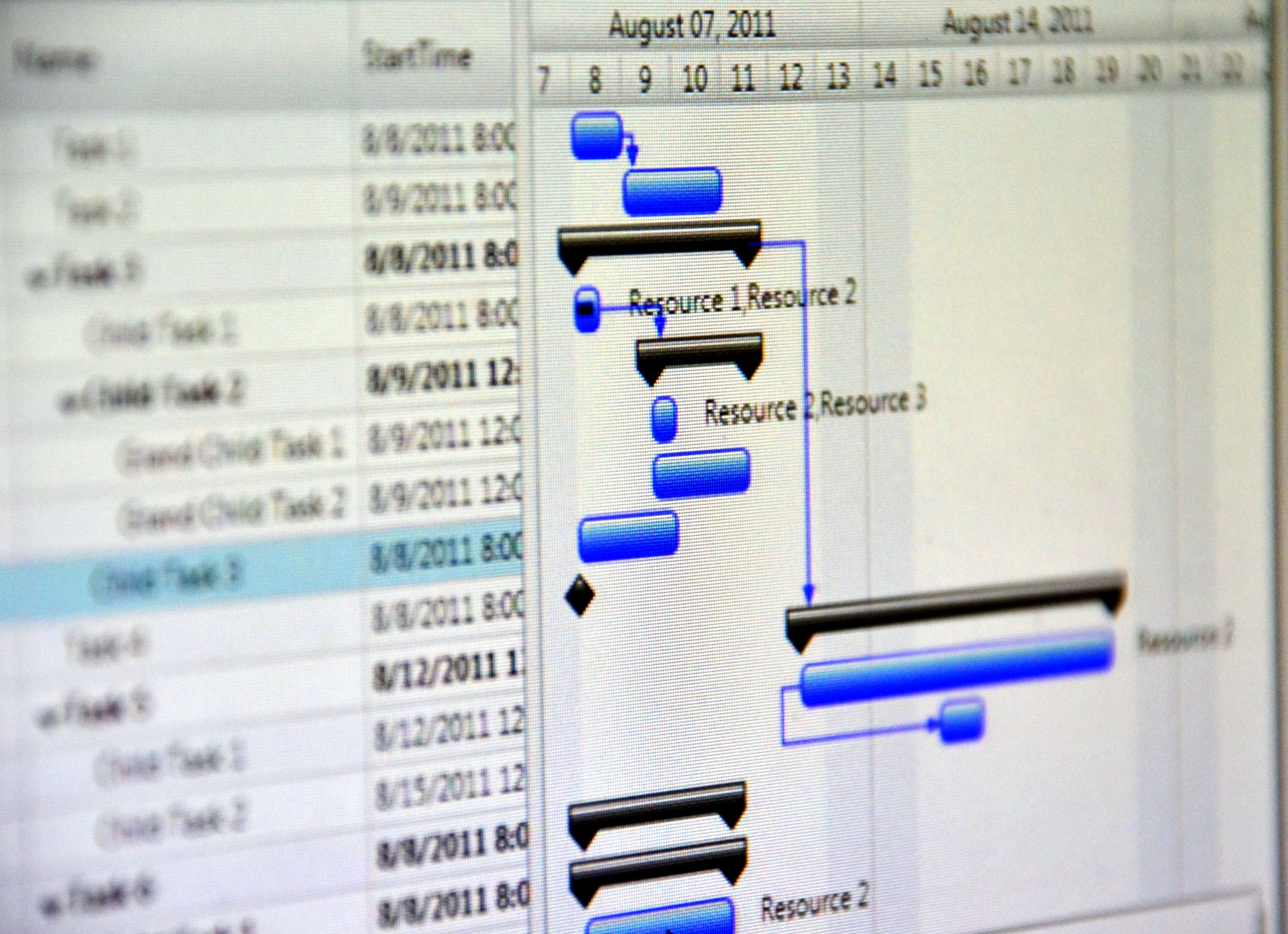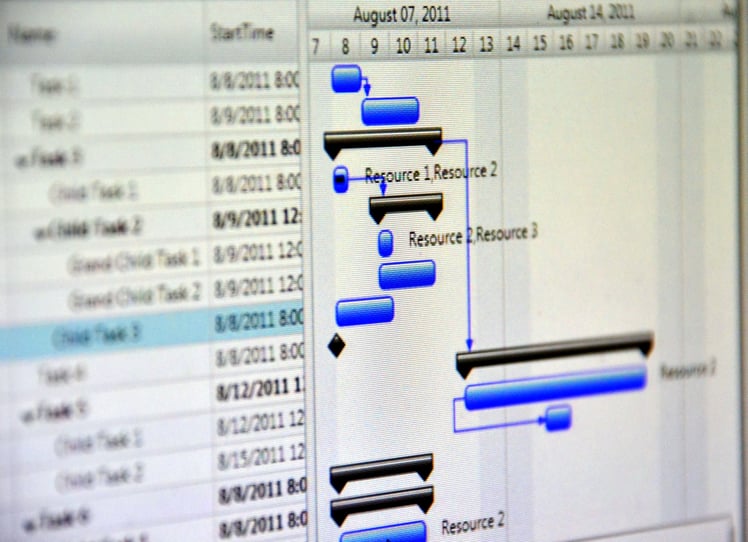

Get our latest posts in your inbox
Subscribe to our blog to receive the most recent news and industry updates.

Project Management Methodologies Continued
In our last post, we covered the Kanban and Critical Path Methods of project management from the perspective of a property management business. The common theme in the project management methodologies we are highlighting is the importance of knowing what your project entails so that you can measure and manage it. What this provides you is the confidence that you know what is going on in your company—even though no one is in the same building, possibly even the same city.
We're all about micromanaging the process and not the people here at Geekly Media, so we're sharing the bits we've learned about managing remotely in this series of blogs. If you need help getting your remote teams up to speed before applying these tips, we recommend downloading our Property Management Handbook for Successful Remote Teams for free here.
Gantt Charts are a project management tool, but they've also become a method of managing projects by users who come across them and implement them without a set methodology. This has become a way of managing projects in and of itself.
Gantt charts can be made with tools as simple as a spreadsheet (with a greater expenditure of effort) or using expert tools designed specifically for the job (such as Teamwork or other dedicated programs). So, what is a Gantt chart?

A Gantt chart lists tasks (in order) and their dependencies. It then shows where those tasks fall on a timeline, so you can see who is working on what and when. By filling out the Gantt chart, you can take the time to visually appreciate your workflows, look for gaps where no one is working, and assign tasks to those gaps.
Gantt charts are also helpful when working on projects that require adherence to dates and important scheduling (think NASA launches). If a critical element of your project is missed, a Gantt chart will help you easily shift the dates of all of your tasks forward so you can plan around the delays.
If applying a project management methodology to how you run your property management business sounds like something that would help, how do you start implementing such tools into your property management systems?
Before you can measure, you need to know what you're measuring.
Even if there are small variations, those variations make it nearly impossible to assign timelines to tasks or determine where inefficiencies are and track what your employees are actually doing. Start by tackling this issue, and you'll also have a better understanding of the efficiency of your property management company as a whole.
Be it on a whiteboard or something more sophisticated such as Lucidchart, create the official record of the workflow of each process. Giving yourself a visual of all of the workflows you need to manage will make it easier to choose how you want to manage them.
What came first, the method or the system? That depends on what means more to you. If in reading these blogs you felt particularly drawn to a system or a program, then that is where you should start—especially if you're new to using them. Choosing what is cost-effective and makes sense will help you avoid frustration and scrapping the project.
Have everything set up how you want it? Host a Zoom training session for your team. Be sure to record it so employees with questions can refer to it later. Then—and this is the most important part—enforce the use of the system. Even if you are rolling out a spreadsheet-based tracking system (not that anyone would these days with the plethora of free tools out there), a project management program and methodology is only as good as the use of it.

Expect some pushback; expect some grumbles about change. Employees will probably argue that using such a system is going to make their work take longer—we've seen it here at Geekly Media. The truth is, it will require a little effort to acclimate in the beginning. Every tool comes with a learning curve—but once your people get comfortable with the new system, the transparency will save hours. Hours of "Hey, what is the status of (x)?" Or "Can you approve (y)? I emailed it to you last week."
When you move the management of your company from the inbox to a program that has reporting, you can get visibility like never before—for all levels of your company. Your top performers will be pleased that their efforts are visible, and your low performers will be encouraged to pick up the pace and improve. When they don't, you'll know who needs replacing.
Sound too good to be true? It isn't! We'll show you some of the things you can use when you automate your property management systems using HubSpot in our next blog. Until then, using our Property Management Handbook for Successful Remote Teams can give you the foundation you need to begin applying the tips we're covering in our current blog series.
Subscribe to our blog to receive the most recent news and industry updates.